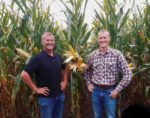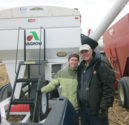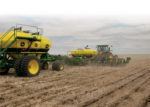Advertise Follow Us
Articles Tagged with ''anhydrous ammonia''
Fertilizer Tweaks, Equipment Updates Yield More Success For Strip-Tillers
A commitment to strip-till and ongoing nitrogen application trials and timing reward Illinois strip-tillers Dan and Trent Sanderson
Read More
No-Till Notes
Managing Nitrogen Practices Now Will Provide Benefits
No-tillers who research the most efficient timing, placement and method of nitrogen application can reduce environmental losses and still increase yields.
Read More
Matching Nitrogen Rates To Strip-Till Profitability
Through research, Minnesota strip-tiller David Legvold and college senior Emma Cornwell found the most profitable rate of sidedressed liquid 28% isn’t always the highest rate.
Read More
Getting It Done With One-Pass Systems
While some sacrifices are required, more no-tillers are putting down fertilizer with the planter to reduce field passes, boost nutrient efficiency and improve soil health.
Read More










